I was supposed to be at a concert this weekend, one that I was really looking forward to — a triple bill featuring Pure Prairie League, Poco and Orleans.
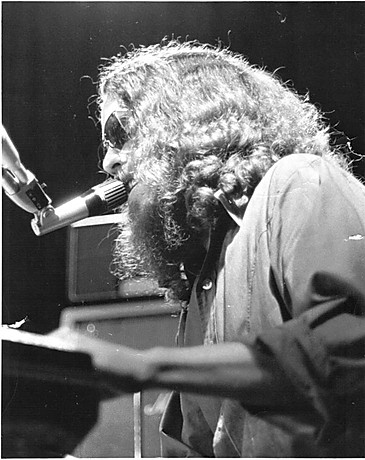
(Photo courtesy of Sherman Kelly)
But that didn’t happen because of the COVID-19 pandemic. In fact, there’s still a question here in early May 2020 if we’ll get back to having any concerts at all this year.
Nevertheless, in the weeks leading up to this show, I had been watching YouTube videos of all three bands, particularly the Orleans cover of the great King Harvest song, “Dancing in the Moonlight.”
That song, written by Sherman Kelly, has always been one of my favorite tunes from the 1970s. Released on July 9, 1972, it became a big hit for King Harvest, reaching No. 10 on the Cash Box Top 100 singles chart, No 13 on the Billboard Hot 100 singles chart and No. 22 on the Billboard Easy Listening chart.
Normally, I often read the comments on those YouTube videos, and I noticed on one Orleans video of “Dancing in the Moonlight,” there was a comment by Sherman Kelly from about five months ago.
Wait. What?
Since I love the stories behind the writing and making of songs and albums — the very foundation on which The Vinyl Dialogues book series is based — my first thought was, “Can I find Sherman Kelly and ask him if he’d consent to an interview to share the story behind “Dancing in the Moonlight?”
Well, I did. And he would. And you’re not gonna believe the story.
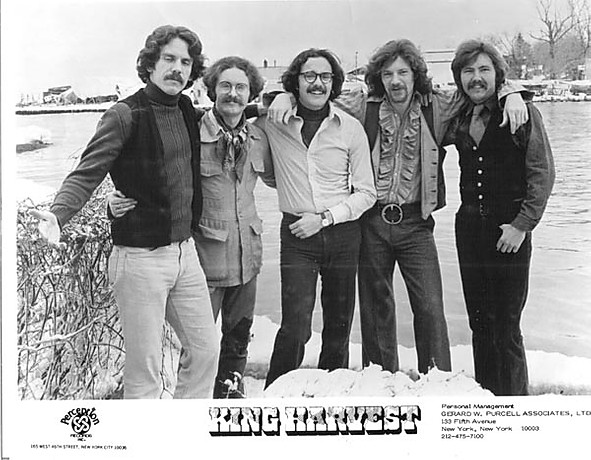
(Photo courtesy of Sherman Kelly)
Kelly and some friends were running a nightclub in St. Thomas, Virgin Islands, in 1969. One day, they decided to rent a 65-foot yacht and travel to St. Croix for the day. Unbeknownst to him at the time, Kelly was prone to seasickness, and he and his girlfriend got really seasick on the crossing.
When the group arrived in St. Croix, those onboard took a dingy to shore to look for some dinner. But Kelly and his girlfriend were both still sick and weren’t interested in eating at that point.
The group got its food and decided to head back to the boat to spend the night. Kelly and his girlfriend looked out into the harbor and saw the boat’s mast swaying back and forth, and instead opted to stay in town overnight rather than risk more seasickness on the boat.
There was only one problem: Due to his extreme seasickness and disorientation, Kelly had left his wallet on the boat and had no money or credit cards for a hotel. The two went to a small inn, explained the situation to the innkeeper and offered to settle up in the morning when Kelly could return to the boat to retrieve his wallet.
“And he said, ‘Sure, you can stay here if your girlfriend will sleep with me,’” said Kelly in a telephone interview from his home in the Finger Lakes region of New York.
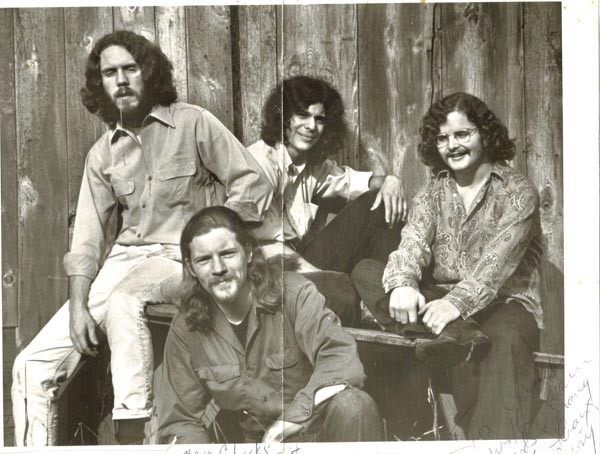
(Photo courtesy of Sherman Kelly)
After being turned down at a second inn, Kelly’s girlfriend said, “It’s a beautiful night. Why don’t we just stretch out on the beach?”
“So we did,” said Kelly. “And that’s all I remember very clearly.”
What happened after that was pieced together through bits of Kelly’s own memory and the recollections of other people. According to those accounts, while sleeping on the beach, Kelly and his girlfriend were the victims of a vicious St. Croix street gang. Kelly was severely beaten by five gang members wielding baseball bats. His girlfriend was raped by the gang leader and the rest were in line. But Kelly’s girlfriend later reported, that Kelly regained consciousness during the attack and fought back, making enough noise to scare off the attackers.
With Kelly drifting in and out of consciousness, the two managed to follow the lights along the shore, eventually making their way to the only St. Croix hospital. Kelly and his girlfriend were thought to be among the first victims of the notorious Fountain Valley Gang, who in 1972 murdered eight tourists and wounded eight more thereby devastating St. Croix tourism for many years.
“I woke up to the sound of my hospital roommate screaming in pain. Finally the screaming stopped and I heard two doctors talking about him. ‘That’s it, he’s gone,’ said one doctor about the other patient. ‘What about him, you think he’s gonna make it?’ And the other doctor said, ‘No, I doubt it.” I realized they were talking about me,” said Kelly.
Kelly did make it, though. He spent several days in the St. Croix hospital, eventually returning to St. Thomas, where he stayed at a friend’s house while he recovered. Eventually he was healthy enough to get back to New York, where doctors at New York Hospital were able to re-break and re-set the bones in his face and address his other injuries.
Returning to his home in Ithaca, New York, still in pain and with constant headaches, Kelly was in no shape to be in a band. But that didn’t prevent him from writing songs.
And it was during this period of convalescence that he began to write some verses for a song, verses that would later become the lyrics for “Dancing in the Moonlight.”
“I envisioned an alternate reality, the dream of a peaceful and joyous celebration of life. It was just me imagining a better world than the one I had just experienced in St. Croix,” said Kelly.
An unspeakably traumatic experience that almost cost him his life had turned into a beautiful song.
“It was amazing. People liked the song right from the start. I liked it, but I wouldn’t have predicted that it would become a big hit,” said Kelly.
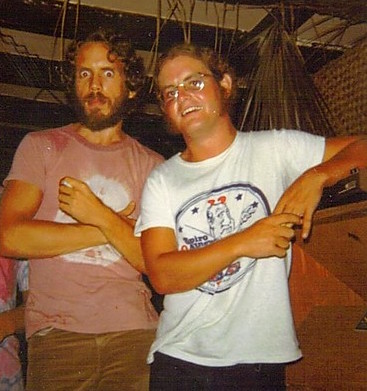
(Photo courtesy of Sherman Kelly)
King Harvest wouldn’t be the first to record the song, though. In 1970, Kelly joined a band called Boffalongo, with his brother, Wells Kelly, guitarist Larry Hoppen, bassist and keyboardist Dave “Doc” Robinson and Peter Giansante. “Dancing in the Moonlight” would appear on the 1970 Boffalongo album “Beyond Your Head,” with Sherman Kelly on lead vocals, Wells Kelly on drums and Larry Hoppen on lead guitar.
His vocal on that version of the song is horrible, according to Kelly.
“The first time I was in a recording studio for that version, we had these producers who thought it was a good idea to give me cocaine. That was probably the worst idea,” said Kelly. “I found myself in the vocal booth, where there were a lot of people distracting me. And the producers would give me more cocaine to keep me doing takes until my voice was so distorted and so weird.”
But that version was popular, and Boffalongo had a regional hit with it. The song was also recorded by a group called High Broom and also released in 1970 on Island Records, but failed to reach the charts.
When Boffalongo broke up, Wells Kelly joined the then Paris-based French-American group King Harvest, whose lead singer was Doc Robinson, also formerly of Boffalongo. It was Wells Kelly who introduced “Dancing in the Moonlight” to the band.
The King Harvest version of “Dancing in the Moonlight” features Robinson on lead vocals. It was released as a single, with “Lady Come Home” on the B-side.
Once the song became a hit, King Harvest invited Sherman Kelly to tour with the band in the summer of 1972. During live shows, Robinson handled the lead vocals on the song and Sherman Kelly provided harmony.
“Doc had a pretty good voice, better than mine,” said Kelly. “I remember one critic said about me, ‘As a singer, Sherman Kelly is not too bad of a songwriter.’ That was amusing, and true.”
But life on the road with King Harvest wasn’t for Kelly. He lasted just that one tour with the band.
“Imagine yourself in your twenties and you’ve written a hit song, you have some chart action and you’re traveling around. It was fun for a while,” he said. “But life on the road is ridiculous. I didn’t really care for it after awhile.”
Wells Kelly would eventually leave King Harvest and reconnect with John Hall. Wells Kelly, Hall and Harvey Brooks had been in a band called Thunderfrog in the late 1960s. Along with Larry Hoppen from Boffalongo, Wells Kelly and Hall formed the band Orleans, which would also record its version of “Dancing in the Moonlight.” The current incarnation of Orleans, which still includes Hall, and Larry Hoppen’s brothers, Lance and Lane Hoppen, still has “Dancing in the Moonlight” in its set. Larry Hoppen died in 2012.
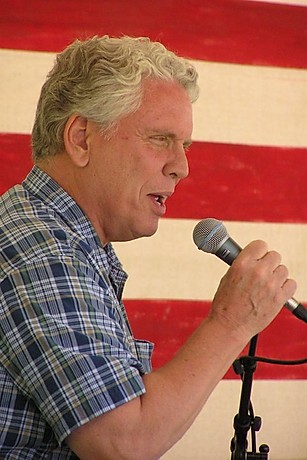
(Photo courtesy of Sherman Kelly)
As for Sherman Kelly, he graduated from Cornell University in 1967 with a bachelor’s degree in psychology and English. He went on to study at Alliance Francaise in Paris, the University of Lausanne in Switzerland and the New School for Social Research in New York City, all before writing “Dancing in the Moonlight.”
After the tragic death of his brother Wells Kelly in 1984 — who died on the front step of a London apartment after a night of partying while a member of Meat Loaf’s band — Sherman Kelly found it too painful to work in music and pursued other interests, including getting his master’s degree in social work and psychotherapy from Syracuse University in New York. For many years, until his retirement, he worked as a psychotherapist.
In 2008, he released an album called “Burnin’ the Candle,” which included some unfinished work that he and Wells Kelly had written together.
In 2000, Toploader covered “Dancing in the Moonlight,” which became a hit for the band. The song has been featured in various films and on television shows. In 2017, “Dancing in the Moonlight” was featured in the video game “Guardians of the Galaxy: The Telltale Signs” and serves as the opening song for the second episode.
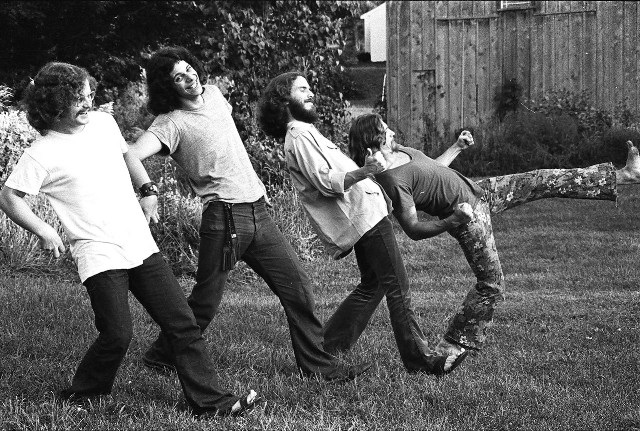
Don Steinkraus
Thanks for this interesting article (and tragic!). I lived in Ithaca in the late 60s and heard Boffalongo play Dancing in the Moonlight at a waterfront bar. I suppose about 1970 or 1971. They were a terrific band. They also played their version of the Beatles “You Can’t Do That”.
Nancy Christenson
Thank you, Mr. Morsch, for this well-researched, captivating glimpse into this joyously expressive song, and the people and events involved in its creation. Thank you, Mr. Kelly, for the peaceful joy your song has brought to my soul in the decades since its (second) release.
Kelly Jefferson
I found this article after watching a YouTube video on one-hit wonders. The story about “Dancing in the Moonlight” sounded too horrible to be real. I subsequently found multiple corroborations, including this one.
I’ve always loved the song, but it sometimes leaves me slightly uncomfortable. It came out at a time in my childhood when I was struggling with the illness and death of my 5-year-old brother from leukemia. Many songs from the late ’60s and early ’70s stir up emotions related to those years and our family’s individual and collective efforts to put our lives back together.
Add to that my newfound knowledge of what gave rise to the song and I’m not sure I can listen to it for a while.
That said, it really is a beautiful tune with beautiful lyrics.
northierthanthou
Thank you for this account. I do wonder what ever became of his girlfriend? I would imagine her trauma would have been at least as intense as his. How did she recover?
Robert Wilson
Every time that this song is played brings back memories of the first time that I heard it.
My mother had moved from DC to Tallahassee and I had traveled down US 95 to Jacksonville to get on I10 West. Arriving in Jacksonville around 9:00pm I went directly to Jacksonville Beach parked with my car radio blasting local radio when I first heard Dancing. It felt so right. Coming from up north walking under the moonlight the warm ocean breeze the sand dunes and sea oats, 21 years old and a romantic at heart. I felt incredibly seduced by it all.
Joan
I was in Ithaca in the late 60s and knew well most of those guys. You told Sherman’s song’s story well, adding details I hadn’t known. I used to perform “Dancing’” as a solo folksinger – it’s so solid, it holds up well “unplugged.” Thanks for the insight – though tragic, it is an important, profound backstory that I wish more people would know. Bravo on an excellent interview.
Timothy D MacIver
What an interesting article! Thank you for doing the research and writing it. I first encountered this song from that Guardians of the Galaxy video game you mentioned here in 2017. Something about the song always made me want to learn more about it. That’s how I stumbled upon this article, and I’m glad I did!
Don
Wow. Well done.
Sahan Nanayakkara
Incredibly sad but empowering backstory to this wonderful song. Thank you Mr Kelly for the joy and inner peace this song has brought millions.
Candy
I have always loved this song as well as songs from the 70’s. I grew up listening to all of the great hits from that era; and still do to this day. Thank you writing such a heartfelt and sad story! Thanks also goes to Mr. Kelly for sharing such a private event in his and his girlfriend’s life. I hope they were both able to overcome this tragic event.
Maureen Krupski
The Fountain Massacre was renamed Carombola but it is in the mountains. That is where people were murdered on the golf course. I am confident, at that time, Hospital Street in Christiansted had a small hospital, not any more, and Christiansted Harbor would have to be where they docked or anchored. Would love more details tying this with the murders in the mountain area together.
Stephanie Deines
Me too! Also I really am concerned about recovery of his girlfriend. I know it’s very personal however I just want her to know how much love we all feel for her!
Tom Pinto
This song has always been a favorite of mine…Thank you for sharing this story. It strengthens my belief in the self healing properties of the artistic process, and why the creative-healing process is every bit as important as the art that is ultimately generated.
Karen Berry
Simply my favorite song. There’s such a playful innocence about it; “you can’t dance and stay uptight”… I’m in the medical profession too; music is one thing that breathes joy into daily life. That kind of melody/lyrics must come from a mystical depth.
Fascinating article. If you’re ever in the South, I’d love to see you perform!
Bob Trudell
I was Doc Robinson’ss best friend here in New Port Richey, Florida, until his death a few years ago, faulty pacemaker. He is deeply missed among his buddies here in Florida. We would have cookouts on Sundays from time to time, and would go to the Albertson’s food store. While we walked through the store, sometimes, his song would come over the PA system, and he would sing along. One time a lady standing in line at the checkout said, “Sir, you did a great job of singing that song back in the beer section.” Dave said, “Yes ma’am, I’ve been told that alot!” Dave was a great friend, we had a lot of fun through the 40 some years we were friends. Miss yah brother Dave.
rev. John Rains
I have been a resident of St Croix for 21 years and was fully aware of the Fountain Valley Massacre; we don’t speak about it here as it is such a black mark on the record of this beautiful island – the Fountain Valley Golf Course is now the Carambola Golf Course to further distance the memory.
I was putting together songs for a Van Morrison set and was on the edge about including Dancing in the Moonlight, being more of a blues musician. I was researching the provenance of each of the ones I had chosen which led me to stories of Kelly’s attack and subsequently this article which is the most complete reference, especially Kelly’s own recollection; I was unaware. It turns me to tears that this could have happened. I was going to cut Dancing in the Moonlight from the set but now, it is in, with a real back story and meaning.
Patti
This is my most favorite song. It’s used as my ringtone so I hear it “daily”! Such a beautiful song to come out of a tragedy. Violence is and has been a problem for centuries. My “bestest” nephew and I break out dancing together when this song is ever played!
Happy tune for us. Thank you!!
Timothy Scanlan
I was recently on a rock cruise & the band Orleans told our crowd that the song is officially their own now, alluding to some of its history. They do a great job with that song. Quite a background! Yikes! A bit more spiritual now!
Ken Mac Auley
I grew up with Sherm Kelly in Lexington, Mass. We went to the same grade school and I knew his family well. One memory I have is being in his house and hearing a loud rock piano pounding out some tunes. It was his younger brother, Wells and he was great. It did not surprise me to learn that he had gone on to a musical career. It did surprise me to read about Sherm’s musical career. But when I reflect back on it, though, it shouldn’t have. He frequently would belt out a tune, even though he never played a musical instrument, at least to my knowledge. It was a pleasure knowing him at that age, and that memory jars with his experience in St. Croix. I hope he is well and happy. Ken MacAuley
Mary Parker
Thank you for this article! I’m 64, and this has always ALWAYS been my favorite song. I never knew the backstory until now. Tragic and interesting.
Wendy
Wow! That’s an amazing story. This has always been my favorite song because it makes me feel so happy and peaceful. I love music but rarely listen to it because it just stirs up too many emotions for me and I don’t always have time to cry. 😂 When I turned 60 I spent a few hours listening to music 🎶 first some that makes me cry, such as Alison by Elvis Costello, quite cathartic, and then to top the night off nearly every version of Dancing in the Moonlight I could find. To bring me back to a spot where I could say, “ ok you’re 60 now, get to it!”
Coco
This was fascinating. However I wanted to know what happened to the poor girlfriend — I didn’t catch a mention of her after the hospital, but the “roommate” who died is referred to as a “he,” so I’m assuming she didn’t die? Do you know if she’s okay?
Dianne Fotiades
Dancing in the Moonlight was and is the happiest feel good song of my teenage years. Every time I hear it I can feel it in my heart. Thank you for such a beautiful gift that will live with me forever!
Andrea M Ryder
It’s now my all time favorite song. And I just learned the background.
I cry every single time I hear it.
Jacqueline Martino
I never knew such a beautiful song had such violent origins. I thought maybe it was about a wiccan ritual. Maybe that’s what Moondance by Van Morrison is about?
Gerry
The first time I heard this song was on an old K-tel Records commercial. I’ve always liked this song, because it’s so upbeat and positive. To think that it came out of a horrible experience is amazing to me. That Sherman became a psychotherapist is also incredible. And fitting, since he was able to write a song that was so positive compared to the nightmare that actually occured on that beach.
Tammy Michele Gray
That’s a great story! Thanks for sharing it!